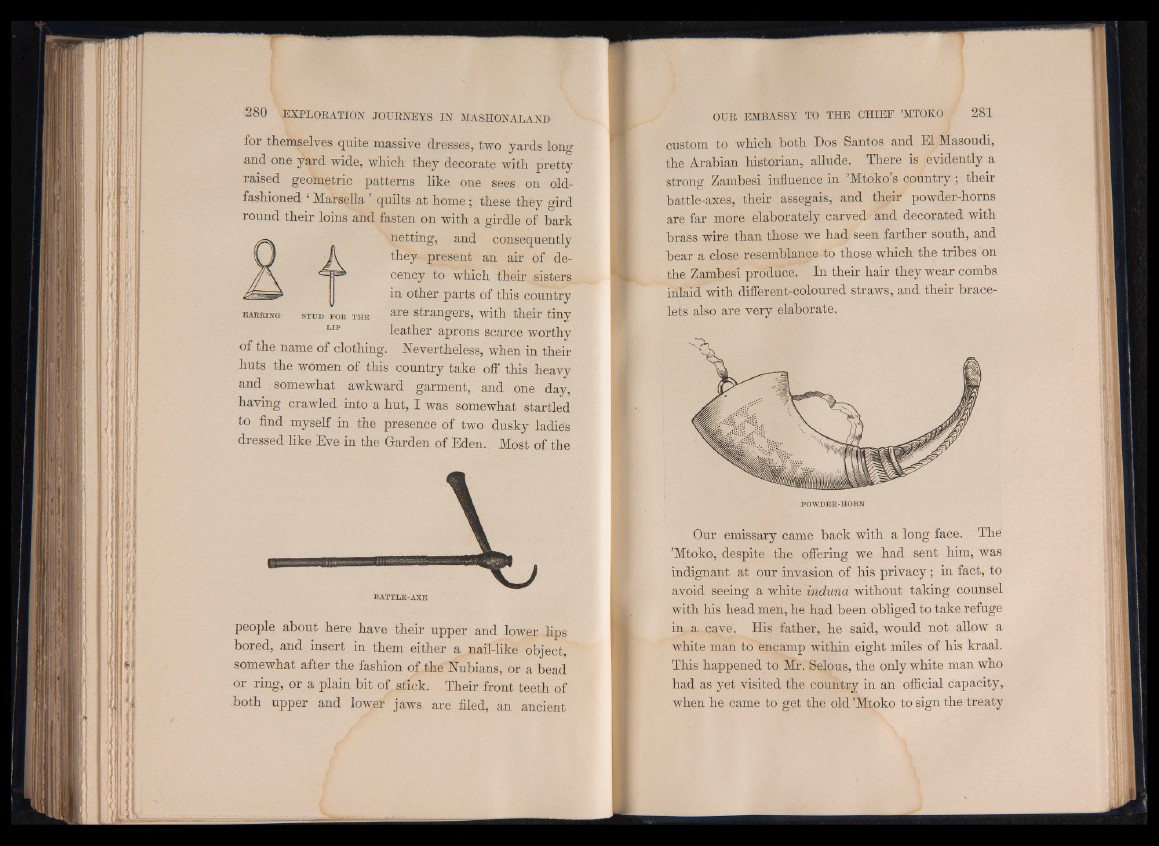
for themselves quite massive dresses, two yards long
and one yard wide, which they decorate with pretty
raised geometric patterns like one sees on old-
fashioned ‘ Marsella quilts at home ; these they gird
round their loins and fasten on with a girdle of bark
netting, and consequently
they present an air of decency
to which their sisters
in other parts of this country
are strangers, with their tiny
leather aprons scarce worthy
of the name of clothing. Nevertheless, when in their
huts the women of this country take off this heavy
and somewhat awkward garment, and one day,
having crawled into a hut, I was somewhat startled
to find myself in the presence of two dusky ladies
dressed like Eve in the Garden of Eden. Most of the
BA T T L E -A X E
people about here have their upper and lower lips
bored, and insert in them either a nail-like object,
somewhat after the fashion of the Nubians, or a bead
or ring, or a plain bit of stick. Their front teeth of
both upper and lower jaws are filed, an ancient
custom to which both Dos Santos and El Masoudi,
the Arabian historian, allude. There is evidently a
strong Zambesi influence in ’Mtoko’s country ; their
battle-axes, their assegais, and their powder-horns
are far more elaborately carved and decorated with
brass wire than those we had. seen farther south, and
bear a close resemblance to those which the tribes on
the Zambesi produce. In their hair they wear combs
inlaid with different-coloured straws, and their bracelets
also are very elaborate.
POW D E R -H O R N
Our emissary came back with a long face. The
’Mtoko, despite the offering we had sent him, was
indignant at our invasion of his privacy; in fact, to
avoid seeing a white induna without taking counsel
with his head men, he had been obliged to take refuge
in a cave. His father, he said, would not allow a
white man to encamp within eight miles of his kraal.
This happened to Mr. Selous, the only white man who
had as yet visited the country in an official capacity,
when he came to get the old ’Mtoko to sign the treaty